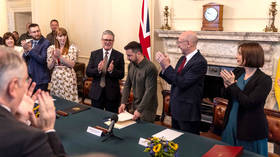Bad to the Spone: Charles Krafft’s An Artist of the Right

You can buy Charles Krafft’s An Artist of the Right here.
1,256 words
Charles Krafft (ed. Greg Johnson)
An Artist of the Right
San Francisco: The Mystic Sons of Charles Krafft, 2022
Charles Krafft, who lived from September 19, 1947 to June 12, 2020, was a skilled and talented artist, poet, essayist, and provocateur who became famous for his unique approach to Delft-style ceramics. To this day his Disasterware, Porcelain War Museum, and Spone collections are sought by collectors worldwide who appreciate works of art imbued with his craftsmanship, imagination, and skill. He is also remembered for his Right-wing views (which led to an attempt to cancel him in the mainstream art world in 2013), dark humor, love of disaster imagery, and ironic militarism.
An Artist of the Right collects several transcripts of Krafft’s speeches and interviews, in addition to his writings from his time as a contributor to Counter-Currents. There is also a thoughtful introductory essay by editor Greg Johnson that provides the context for the pieces that follow, which include transcripts of three interviews Krafft gave to Counter-Currents Radio, three talks he gave at Counter-Currents retreats, a lecture he gave to The London Forum, another he gave to The Northwest Forum, and two of his written works.[1]
Krafft was as unique a character as any to be found in Seattle’s vibrant arts scene. Not only was he a skilled artist, but he also possessed an inquiring mind that set him apart from his contemporaries. He began as a poet who supported himself by putting on psychedelic light shows at rock concerts. He later apprenticed under the tutelage of the artists Morris Graves and Guy Anderson, and also became involved in the automobile decorative art scene alongside his mentor Von Dutch, a pinstriping hot rod artist. Krafft would later combine his love of European folkways and sense of humor with a subversive streak that led him to crafting striking works of Delft ceramic art. Krafft describes his tutelage in Delft art as an education facilitated by a group of “sable-brush-wielding grannies” who called themselves the Northwest China Painters Guild.[2]

In an interview with Greg Johnson, Krafft describes how he learned to paint Delft ceramics:
Well, during the two years when I was trading letters with Von Dutch, I wanted to do a tile portrait of Von Dutch in the “Dutch Delft” style, and I didn’t know how to paint on a ceramic surface. So I enrolled in a hobby crafts class for china painters. And I attended this class for a winter, with these little old ladies who took a big shining to me because I was a “real artist,” and they consider themselves just hobbyists. But they were really adept at what they did, and they taught me a lot about china painting and the history of ceramics. So it happened when I switched from painting on canvas to painting on ceramics. That’s when this happened. And the ceramics took off, and the painting I don’t think they ever would’ve—they were too provincial, I think, to ever have received as much attention as these ceramics had received, and continue to receive.[3]
Krafft would go on to produce ceramic hand grenades, AK-47 rifles, pistols, Molotov cocktails, Dutch-style windmills featuring National Socialist symbols, and near-pastoral scenes of domestic rural life punctuated by violence or disaster. His collection of dictator teapots, Right-wing dissident thinkers, and other such pieces were an inspiration to many. His use of human bone in some of his ceramics led to his series of Spone pieces, the term being a portmanteau of the words “bone” and “Spode” (the surname of the eighteenth-century English artist and potter Josiah Spode). Krafft’s undeniable skill and talent in the realm of ceramics led to his works being featured in books and exhibits, some of which remain on display to this day.

Krafft’s quest for truth and freedom of expression led him not only to Counter-Currents but also revisionist history circles, Hinduism, and Zen Buddhism. He likewise travelled widely and was a voracious reader of Alan Watts, Savitri Devi, and Aleister Crowley, among many others. And naturally, he explored various creative subcultures.
An Artist of the Right reveals the impact that Krafft’s travels throughout Europe, India, and elsewhere had on his political and creative outlook. In his speech to the London Forum, for instance, he explains that he travelled with the famous Slovene industrial band Laibach as their official photographer during their famous 1995 tour that ended in Sarajevo, when the city was still under siege by the Serbs. This experience led Krafft to become interested in the militarist aesthetics he saw in wartime former Yugoslavia. It was a formative event for him:
I got the bright idea — looking at these Bosnian militiamen with Kalashnikovs strapped on their backs; they were in the theater, where we were putting on this concert, during the siege of Sarajevo, the very last day of the siege — to re-cast weaponry in porcelain.[4]

This experience inspired him to recreate weaponry in the Delft style, a project that had an enduring impact:
That’s kind of how I got famous. I created something called the Porcelain War Museum. It’s an ongoing project. Just life-sized weapons, guns, automatic weapons, and pistols, in Delft. It looks just exactly like your granny’s china, but it’s a life-sized, detailed, automatic weapon usually. If I can get my hands on them, I cast these in plaster. Then I re-cast them in porcelain, and then I decorate them in blue and white.[5]
His ceramic weapons channelled that experience into unique decorative works that continue to be popular with collectors.

Artist of the Right also includes a transcript of Krafft’s lecture entitled “What’s Wrong with the Arts?” It is an insightful critique of the politically-correct hoops that aspiring artists must jump through in order to receive municipal, state, or federal funding for their projects. Krafft was intimately aware of the officious bureaucratic hurdles that white artists in particular must negotiate to be able to secure any type of public funding:
So, the problem with the situation across America is this multicultural mandate that you have to have to, number one, exhibit your work if you’re a visual artist at a gallery, perform your art if you’re a theatrical person, and then if you want to be a poet or a novelist and you need an extra bunch of money to complete a literary project or build a website or do whatever they’re doing out there that they call making culture. You have to toe this party line which is cultural Marxist. And that is a big problem out there with people in the profession.[6]
Although Krafft was speaking in the context of securing public funding for artistic endeavors, this type of de facto censorship is endemic throughout so much of the West, where grant-giving public institutions pander to non-white or other regime-approved groups.
The texts in this book provide a wide-ranging look at Krafft’s views on art, politics, some of the more controversial aspects of Second World War historiography, his battles with the mainstream media, and much more. They reveal his intelligence, creativity, and sense of humor. An Artist of the Right is an invaluable collection for those interested in one of the dissident Right’s most likable and fascinating creative minds. He will be missed.
* * *
Like all journals of dissident ideas, Counter-Currents depends on the support of readers like you. Help us compete with the censors of the Left and the violent accelerationists of the Right with a donation today. (The easiest way to help is with an e-check donation. All you need is your checkbook.)
For other ways to donate, click here.
Notes
[1] Charles Krafft, An Artist of the Right, ed. Greg Johnson (San Francisco: The Mystic Sons of Charles Krafft, 2022), xv.
[2] An Artist of the Right, iv.
[3] An Artist of the Right, 7.
[4] An Artist of the Right, 135.
[5] Ibid., 135.
[6] An Artist of the Right, 147-148.



